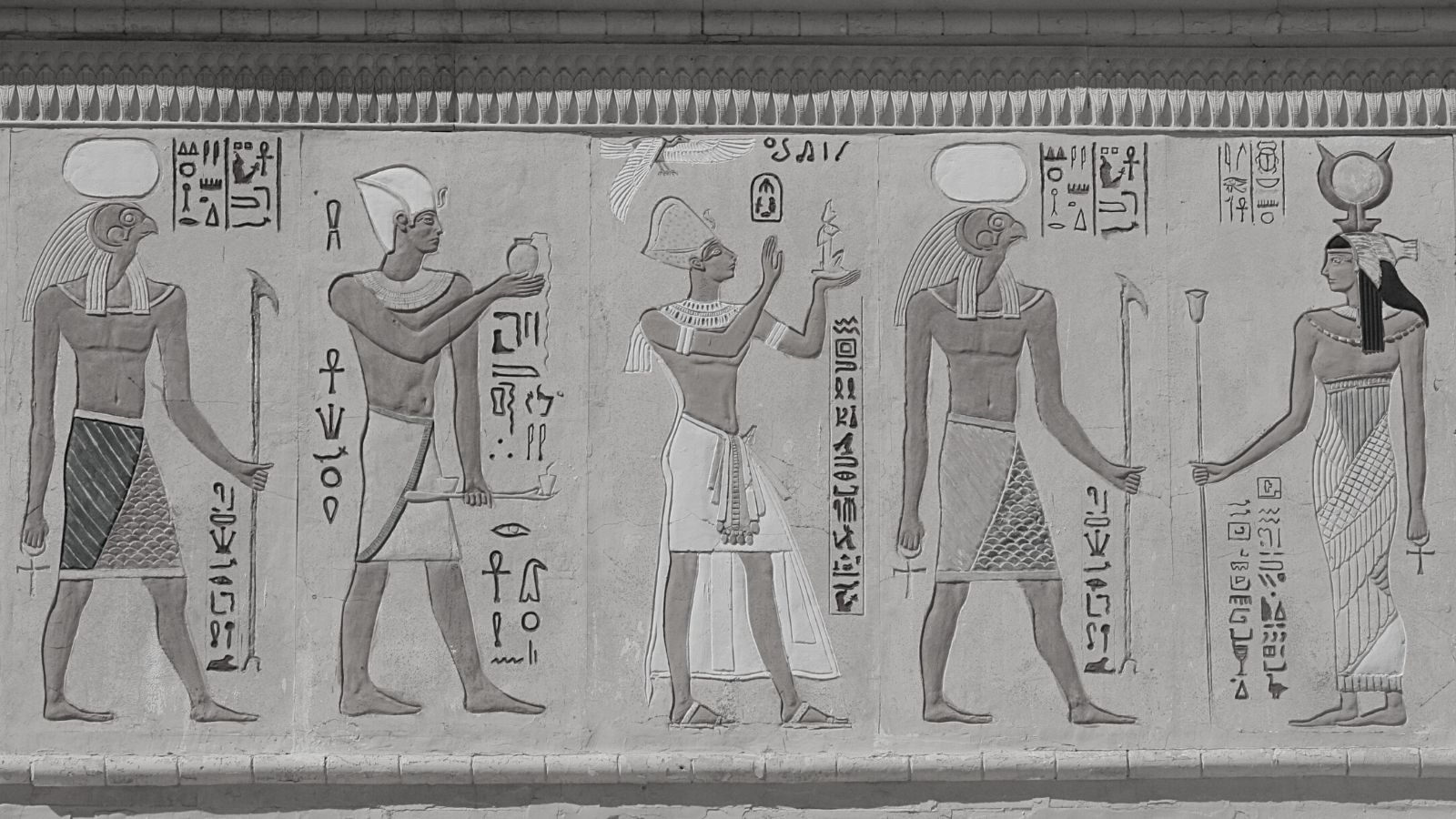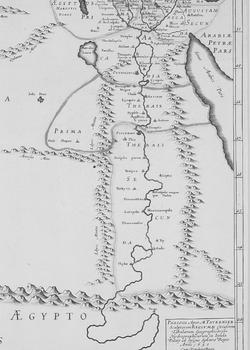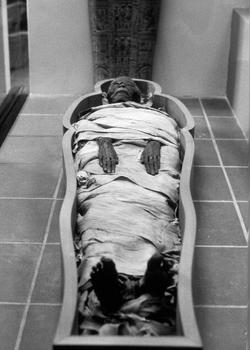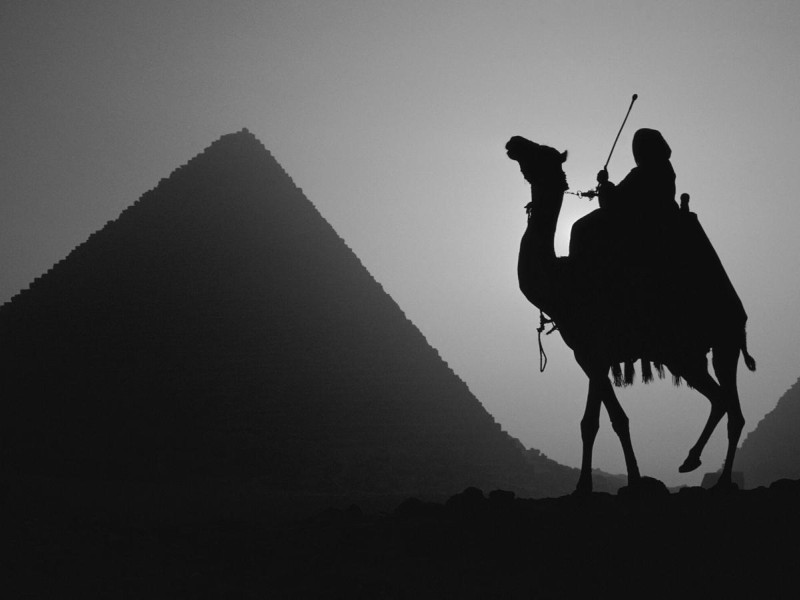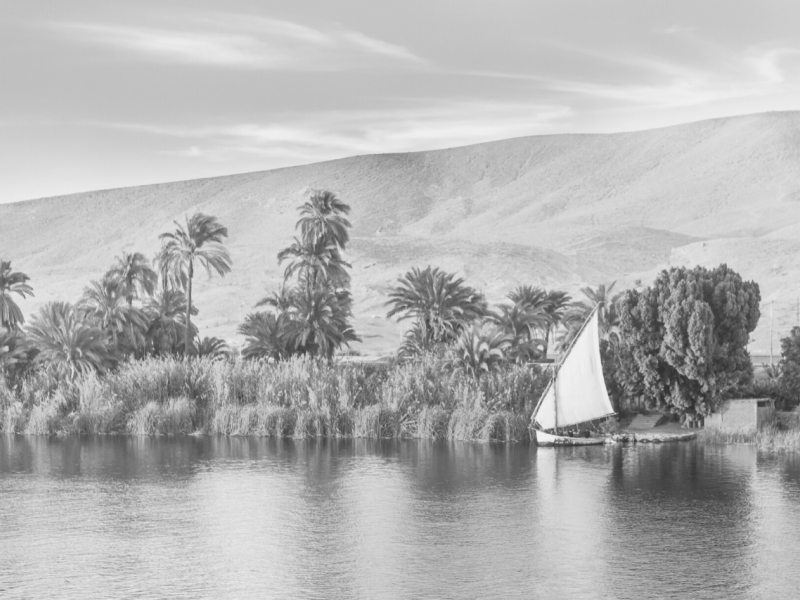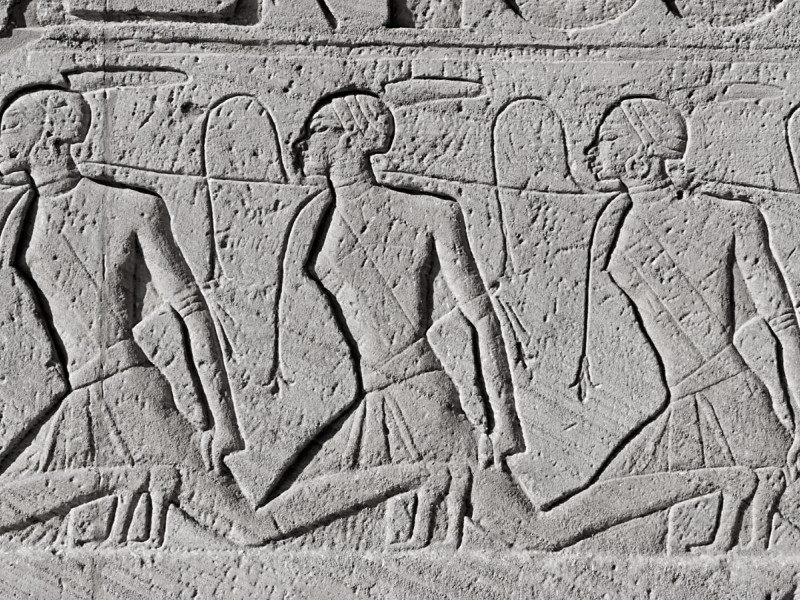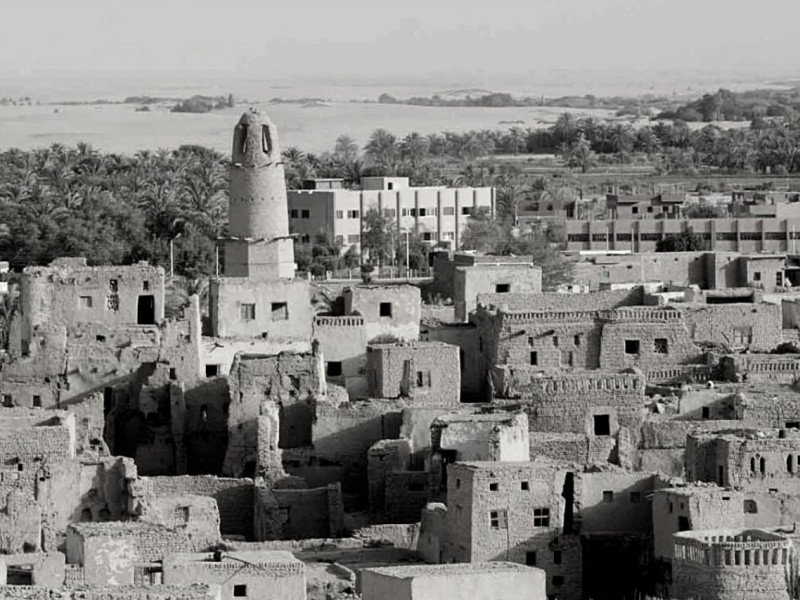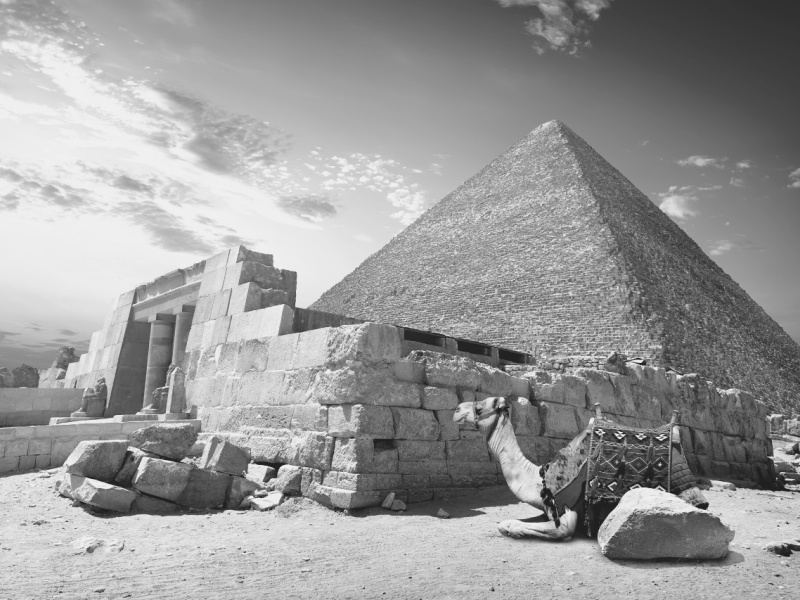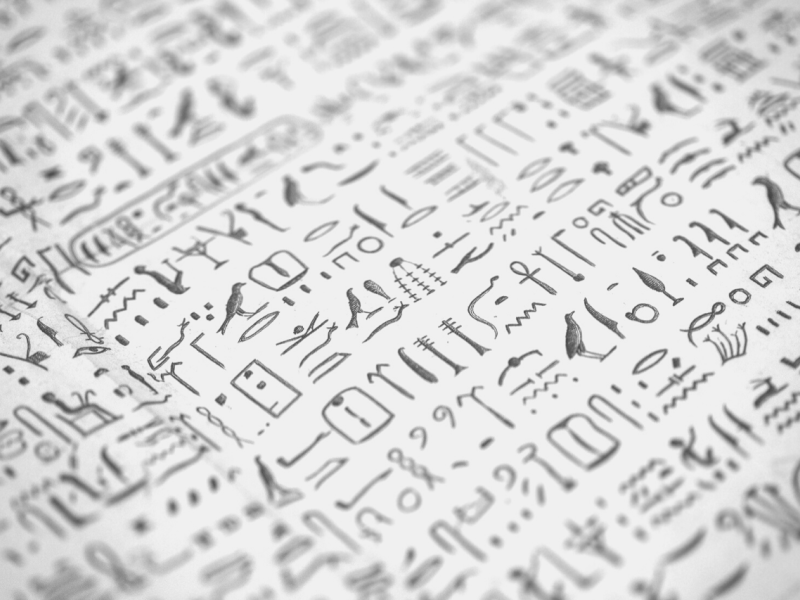Where Did the Egyptians Come From? The Tale of the First Settlers
The Egyptians' origins are one of the most interesting and intriguing origin stories in the world. The tale starts with groups of people from different ethnic, cultural, and religious backgrounds who came to the land looking for water. These people reluctantly laid the foundation of one of the greatest civilizations.
Read ahead about the background of the first settlers and what a recent DNA study of a mummy revealed about the origin of Egyptian people.
Where Did the Egyptians Come From
All the great civilizations of ancient times began when groups of migrants came from different lands and settled there searching for refuge, agricultural land, or water. The civilization of Egypt also started in the same way.
The biggest attraction of the ancient Egyptian land was the Nile River. Here we explain the origins of Egypt and the Egyptians.
Origins of the River Nile
Historians believe that the River Nile originated some 30 million years ago due to the shifts in the tectonic plates in the Earth’s mantle. The river runs from south to north throughout eastern Africa.
It starts from modern-day Kenya, Tanzania, and Uganda and empties into the Mediterranean Sea. Therefore River Nile is the longest freshwater river with a length of 6,693 kilometers.
The freshwater of the River Nile is a source of many blessings. It has many different species of wild fish. The chemical compound, Natron, which is used to mummify, is found in the River Nile. Due to annual flooding, this river floods to the nearby lands, giving the barren land all the nutrients for the most fertile soil in the region.
The First Settlers Around the River Nile
It is speculated that the civilization around the Nile started when groups of people came to the land looking for water.
The water of the Nile has many beneficial qualities. One of these qualities is that it makes the nearby land very fertile. So when the people came looking for water, they stayed because they could irrigate the land and prosper.
The Egyptian kingdom rose to the heights of civilizations as time progressed. With time the people started recording important events and tasks. Whatever we know about the ways of Egyptian civilization is through these records.
These records date back to around 3100 BC. We are certain that the Egyptian Civilization is much older than the reported date.
By the time the Egyptians started recording, the original Egyptian people and the Egyptians ethnicity of the first settlers had faded from memory. Now they were only known as the Egyptians.
So now the question remains: who were the first settlers by the River Nile, and where did they come from?
To answer this question, the DNA of the unearthed mummies came into use.
DNA Analysis of Ancient Egyptians
As we have no concrete answer to who the first settlers beside the River Nile were, the people who started the Egyptian civilization, we look at different ways to get some idea. One of the most important ways to get knowledge of someone’s origin is their DNA.
DNA holds all the information related to us. So to analyze the ancient Egyptian genetics, their DNA was analyzed.
For this purpose, the excavations from Egyptian ruins and pyramids were taken to the lab. DNA from dead bodies or skeletons can be extracted from different body parts. From mummies, it is mostly extracted from their teeth. The analysis of the DNA of Ancient Egyptians was very fruitful in knowing the ethnicity of ancient settlers.
Scientists found out that the ancestors of the Egyptian royalties were from not a single ethnicity but had multiple genetic movements. The ethnicities showed percentages of being from the areas now known as the Middle East, North Africa, Sub Saharan Africa, and the Mediterranean.
From here, we can deduce that the ancient civilization of Egypt was gradually formed when people from different places came to this land.
As different people gathered around the Nile, they started to trade. The social and economic conditions of the settlers got better with time. They made use of their fertile and the way of the river to import and export goods. The trade helped Egyptians make a prominent place in the world for themselves.
We know that the ancient Egyptians or the first settlers near the River Nile were probably from the Middle East, North Africa, Sub Saharan Africa, and the Mediterranean. The DNA analysis performed by taking the DNA from the mummies is, however, not a hundred percent accurate. The DNA might be contaminated due to its age and conditions.
There are also only a few of these mummies, and based on just these few samples, we cannot form a concrete opinion. For this reason, it was decided that the DNA analysis of modern-day Egyptians would also be carried out.
DNA Analysis of Modern-day Egyptians
DNA analysis of the modern Egyptian race was carried out in a large number. A larger sample size would ensure higher accuracy and would ring light to the question at hand.
The scientists were looking for a concrete answer which would put the question of the origins of Egyptians to rest for once and for all. But the results revealed something entirely different.
The DNA analysis of modern-day Egyptians revealed that their ancestral ethnicities are Asian, Arabian, and also Roman, in addition to African, Middle Eastern, and Sub-Saharan. The former three ethnicities were a surprise to scientists. The historians came up with three explanations about why there are multiple lines of descent seen in Egypt today.
Slave Trade
The ancient Egyptian civilization was born based on trade. The people who came to the Nile started trading goods among themselves, and when they were well off enough, they built boats and sailed to faraway lands for trade purposes. As the ancient Egyptians became more powerful and wealthy, they started keeping slaves.
As the traders took the Nile route to export their goods, many other traders from different ethnicities took the same route to Egypt and sold their goods. There were many different items for trade, from clothing, food, building material, to human beings. Everything was up for trade.
So one of the reasons for multiple lineage descent in Egypt is the incorporation of slaves in the earlier times. These slaves were brought from different parts of the world and sold in one of the biggest markets. The slaves were men, women, and children.
As time passed, the slaves progressed to citizens, and through natural fertility, their genetic makeup was incorporated into the genes of the first settlers. The slaves brought in many different features to society. This is one of the main reasons that the DNA of Egyptians shows such versatility in its make.
Immigrants
The ancient civilization of Egypt began with many different groups of immigrants that came to the area and stayed. When the Egyptian empire was at its peak, many people from different backgrounds and ethnicities migrated to Egypt.
One of the main reasons for this migration was to experience civilized life. Egypt was the hub of new civility and inventions.
The Egyptian empire took in migrants, asylum-seekers, artists, and anyone willing and wanted to stay. As the kingdom was huge, there were no issues with the accommodation. In this way, many different ethnicities and cultures were incorporated into the ancient civilization of Egypt.
When we analyze the DNA of Egyptians today, immigration, which occurred thousands of years ago, plays a very important role in describing their multifaceted genetic makeup.
Wars
Egypt was one of the strongest empires in the world at one time. Its civilization. Architecture, governance, society, and the army were unmatched. As Egypt grew stronger, it attracted many different forces.
Not all of these forces wanted peace and trade deals. Some of them wanted power and control of this great empire.
Egypt, for this reason, fought many different wars with different empires. The wars were mostly conclusive and sometimes put Egypt in a serious position. Because of constant wars, borderline changes, and changes in the governing bodies, Egyptian society was affected.
Many different kingdoms and countries laid conquest to ancient and pre-modern Egypt. Some famous opponents were Arabs, Romans, Macedonian, Greek, Ottomans, and the British. In every war, either Egypt lost some of its lands or gained a victory. These wars brought in much different manpower.
This manpower was also a source of different genes and ultimately added to the genetic pool of Egyptians of today.
So the combined effect of slaves, immigrants, and wars gave the Egyptians the most interesting genetic combinations and ancestral lineages.
Conclusion
We now know that the ancient Egyptian civilization started from groups of travelers who stayed in the region because of the River Nile and all that it had to offer. So we cannot pinpoint the exact origins of Egyptians on the map.
What can we do to find some answers then?
The scientists analyzed the DNA samples of unearthed mummies and modern-day Egyptians. The analysis shows that the Egyptians have a paternal lineage to indigenous Afro-Asian-speaking people. Due to different societal and economic contributing factors, many people from different ethnicities became a part of the Egyptian gene pool.
References
Wenke, Robert J. “Egypt: Origins of Complex Societies.” Annual Review of Anthropology, vol. 18, Annual Reviews, 1989, pp. 129–55
Naville, Edouard. “The Origin of Egyptian Civilisation.” The Journal of the Royal Anthropological Institute of Great Britain and Ireland, vol. 37, [Royal Anthropological Institute of Great Britain and Ireland, Wiley], 1907, pp. 201–14
Lichtheim, Miriam. “Ancient Egypt: A Survey of Current Historiography.” The American Historical Review, vol. 69, no. 1, [Oxford University Press, American Historical Association], 1963, pp. 30–46
Wenke, Robert J. “The Evolution of Early Egyptian Civilization: Issues and Evidence.” Journal of World Prehistory, vol. 5, no. 3, Springer, 1991, pp. 279–329.
